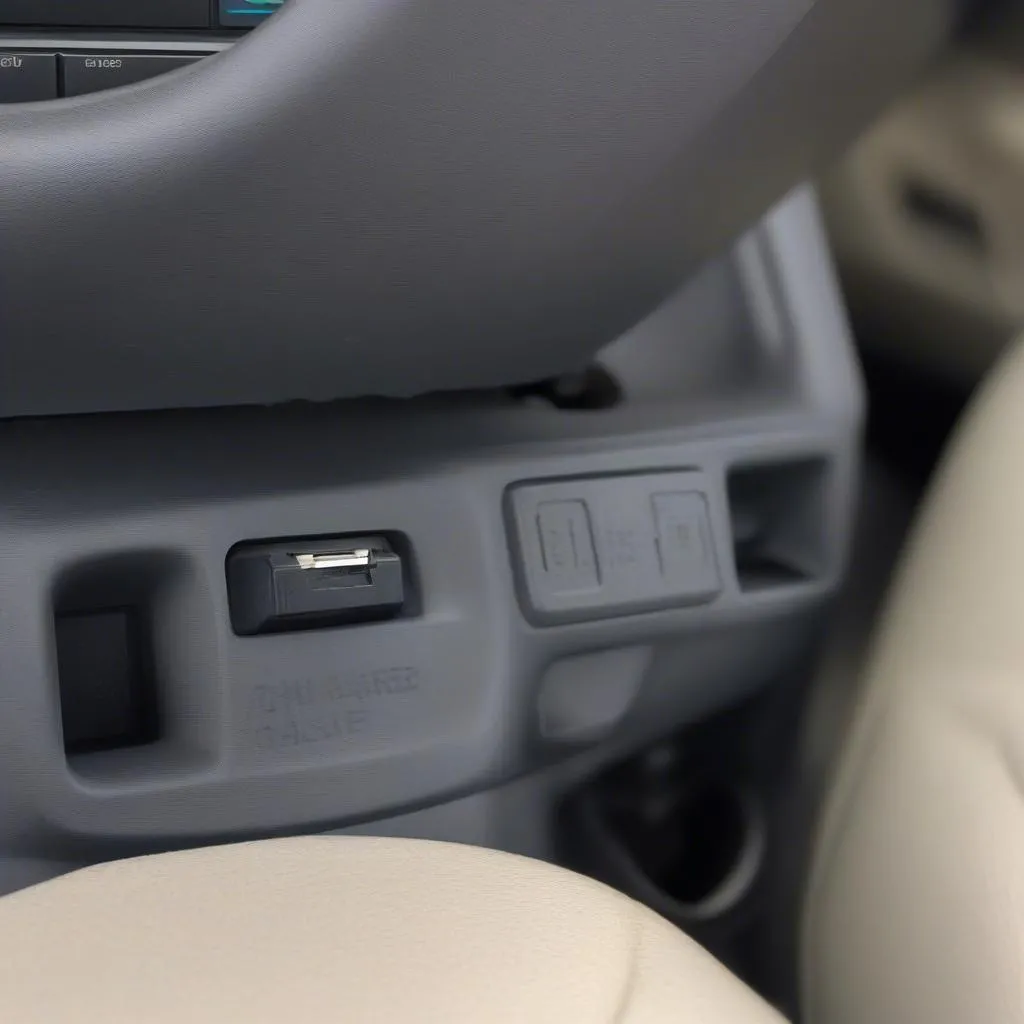Imagine this: you’re working on a project for your 2003 Chevy Malibu and need to access its diagnostic system. You know you need to connect to the OBD port, but where exactly is it? It’s not always obvious, especially if you’re not a seasoned car enthusiast. This guide will help you find the OBD port on your 2003 Chevy Malibu, explaining everything you need to know.
Why Is the OBD Port Important?
The OBD port, which stands for On-Board Diagnostics, is your gateway to your car’s diagnostic system. It acts as a communication bridge between your car’s computer and a diagnostic tool like a scan tool or a code reader. This connection is vital for:
- Diagnosing engine problems: When your Chevy Malibu throws a check engine light, the OBD port allows you to read diagnostic codes that pinpoint the source of the issue.
- Monitoring engine performance: Data from the OBD port provides real-time information about your engine’s health, such as fuel consumption, engine temperature, and more.
- Performing maintenance: Many car owners use OBD devices to reset service lights, monitor fuel economy, and even track their driving habits.
Where is the OBD Port Located on a 2003 Chevy Malibu?
The OBD port on a 2003 Chevy Malibu is typically located under the dashboard, on the driver’s side, near the steering column. It’s a small, rectangular port with 16 pins, often covered by a small rubber flap.
 2003 Chevy Malibu Obd Port Location Under Dashboard" width="1024" height="1024">2003 Chevy Malibu OBD Port Location Under Dashboard
2003 Chevy Malibu Obd Port Location Under Dashboard" width="1024" height="1024">2003 Chevy Malibu OBD Port Location Under Dashboard
Common Questions About the 2003 Chevy Malibu OBD Port
“I can’t find the OBD port on my 2003 Chevy Malibu. What should I do?”
While the OBD port location is generally standard, some vehicles might have it tucked away in unexpected places. Consulting your car’s owner manual is always a good idea. If you still can’t locate it, a mechanic can help you find it quickly.
“Can I use any OBD scanner on my 2003 Chevy Malibu?”
Not all OBD scanners are compatible with all vehicles. You’ll need an OBD scanner that’s compatible with your car’s model year and make. A scanner that works with your 2003 Chevy Malibu will typically support the OBD-II standard, which was mandated by the U.S. government in 1996.
“What are some common OBD codes that I might see on my 2003 Chevy Malibu?”
Some common OBD codes you might encounter on your 2003 Chevy Malibu include:
- P0171: System too lean (Bank 1). This code often indicates a problem with the fuel system, such as a faulty fuel injector or a clogged air filter.
- P0300: Random/multiple cylinder misfire detected. This code points to an issue with the ignition system or fuel delivery to one or more cylinders.
- P0420: Catalyst system efficiency below threshold (Bank 1). This code suggests a problem with the catalytic converter, which may be clogged or damaged.
Finding the OBD Port: A Step-by-Step Guide
If you can’t find your OBD port, follow these steps:
- Consult your owner’s manual: Your 2003 Chevy Malibu’s owner’s manual is the most reliable source of information about your car’s specific features and components.
- Look under the dashboard: As mentioned earlier, the OBD port is typically located under the driver’s side of the dashboard, near the steering column.
- Check the fuse box: In some models, the OBD port may be located near the fuse box.
- Use a flashlight: Make sure you’re looking in the right places with good lighting.
Need Expert Help?
If you are still having trouble finding your 2003 Chevy Malibu’s OBD port or need help with diagnosing any issues, reach out to our team of experienced auto technicians at Tech Car USA. We are available 24/7 to provide expert advice and support, ensuring a smooth and reliable driving experience for your vehicle. Contact us via Whatsapp: +84767531508.
We are committed to helping you keep your Chevy Malibu running smoothly. If you have any questions or need further assistance, feel free to leave a comment below or browse through our other resources on the Tech Car USA website. You can also find more information on the OBD connector in your car in our article on OBD connector locations in cars.